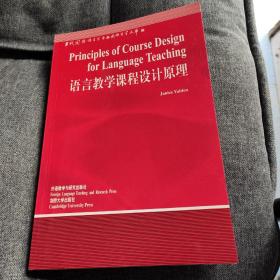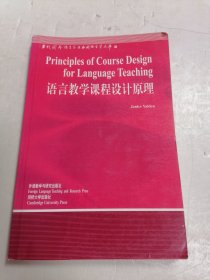
语言教学课程设计原理:英文
¥ 15 5.4折 ¥ 27.9 九品
仅1件
河南开封
认证卖家担保交易快速发货售后保障
作者[英]耶登 著
出版社外语教学与研究出版社
出版时间2000-08
版次1
装帧平装
上书时间2021-02-15
- 在售商品 暂无
- 平均发货时间 12小时
- 好评率 暂无
- 最新上架
商品详情
- 品相描述:九品
图书标准信息
- 作者 [英]耶登 著
- 出版社 外语教学与研究出版社
- 出版时间 2000-08
- 版次 1
- ISBN 9787560019710
- 定价 27.90元
- 装帧 平装
- 开本 16开
- 纸张 胶版纸
- 页数 212页
- 【内容简介】
-
In preparing and teaching secondlanguage courses, language professionals frequently make decisionsin response to learner needs: in choosing texthboks. altering asequence of exercises from a textbook. creating classroommaterials, and so on, Yalden puts these kinds of decisions intoperspective, outlining theoretical issues relevant to languageteachers today.
Set against this theoretical backgroundare practical suggestions on how teachers can devise classroomprocedures and materials that best fit the linguistic andcommunicarive needs of their learners. Emphasis is placed ongathering information from and about the learner. This leads to theestablishment of frameworks, short language-learning modules whichgive support to all of the components needed in a languagecourse.
Procedures for ddeveloping main orsupplementary units to new or existing courses are described indetail. Three complete case studies of courses that the author andher colleagues developed are included in the book. They containnumerous examples of resulting course materials.
...a most welcome addition to the listof professional materials that ought to be read. I recommend thisbook without qualification.'- TESL Reporter - 【目录】
-
王宗炎序
导读
Preface
Part l Usable theories
1 Setting up a course
Part ll language teaching and linguistice:current issues
2 Proficiency in a secomd language
3 language functions and pragmatics
4 Discourse analysis and course design
Part lll Form theory to practice
5 Teachers and teaching
6 Teachers and linguists
7 Teachers and course desing
Part IV Farmeworks for second language course desing
8 Syllabus and methodology
9 A proportional approach
10 Three case studies
11 Using framewords
Appendix A Sanple task-based frameworks
Appendix B Frameworks for communications Needs Courses
References
Indes
文库索引
点击展开
点击收起
相关推荐
— 没有更多了 —




























以下为对购买帮助不大的评价